ZonGuru vs Helium 10 – Amazon FBA Product Research Tools Comparison 2021
![]()
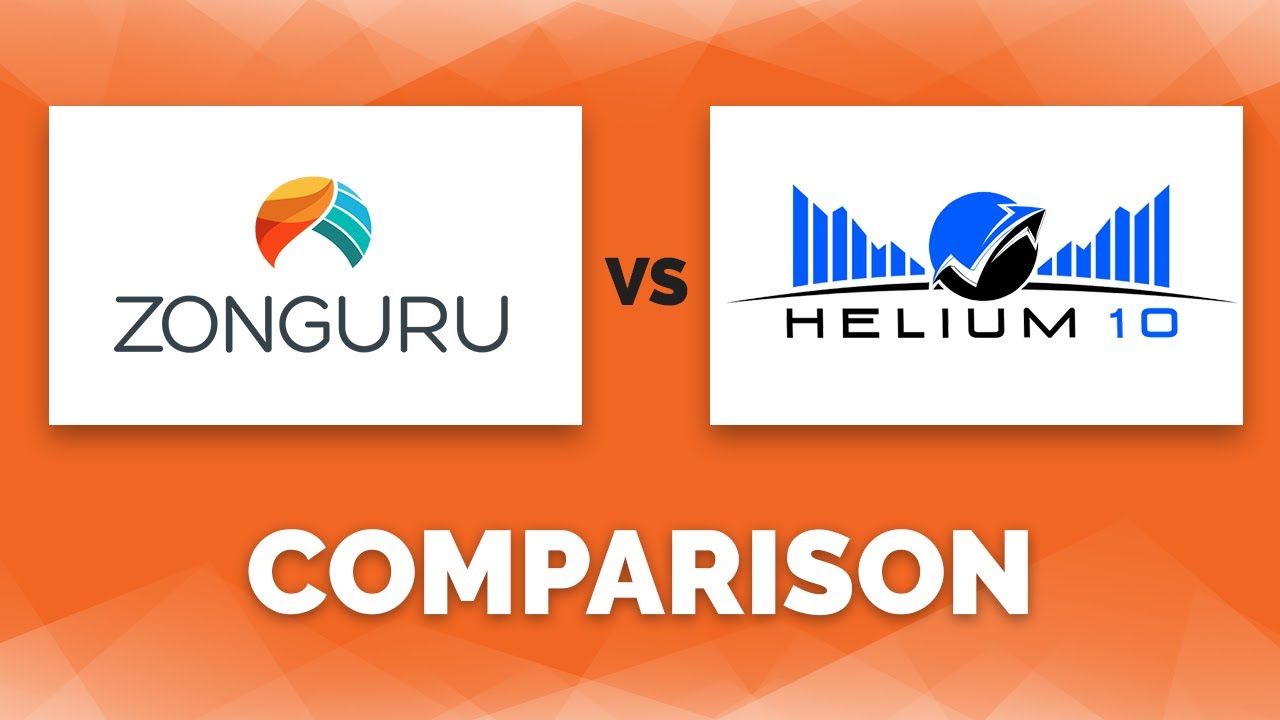
- Introduction
- About ZonGuru
- Helium 10 Black Box product research tool
- ZonGuru Niche Finder product research tool
- Does ZonGuru show review velocity?
- Nich Score metrics breakdown
- Helium 10 Magnet keyword research tool
- ZonGuru Keywords on Fire keyword research tool
- Difference between ZonGuru and Helium 10 keyword research results
- Helium 10 CPR score vs. ZonGuru Launch score
- Does ZonGuru show “Amazon Choice” product?
- ZonGuru pricing
- ZonGuru vs. Helium 10 Chrome extensions
- ZonGuru and Alibaba partnership
- Real data comparison between ZonGuru vs Helium 10
- Tips for a product giveaway and how to rank
- Does ZonGuru provide training for beginners?
Introduction
Augustas: Hello everyone. Today we’ll be talking about two software tools for Amazon sellers, its ZonGuru and Helium 10. We will compare the features they both provide and we will see how. Actually, today we’ll have guests they are coming from ZonGuru, they are creators of this tool and we will be asking them to compare these two softwares, their solution and Helium 10. We will go into product research tools and also to the keyword research tools. There are a lot of other different features in both tools, but we will not have time for that. So, first let me introduce Lisett, she will be cohosting this webinar for one hour and Lisett works with different Amazon brands, and here we go. Here’s John as the co-founder or sale of ZonGuru and Chris. Hello, guys. So, could you please introduce yourself and yeah and introduce ZonGuru, shortly briefly what is it about because some people might not have heard of this tool?
About ZonGuru
Jon: Yeah, thank you Jon and Chris for jumping on this session. So, ZonGuru, it’s an all in one platform for private label sellers. So, it’s a software that you can use to, you know, to help scale your Amazon business. I know we’ve done a few sessions with Orange Click, but I think today, you know, really what we wanted to dive into is a few of our tools and compare them to some of the market leaders in Helium 10, which is obviously a great tool and has, you know, very specific solutions for very specific tasks. We compare very closely to them in terms of tools around product research, listing optimization, how to automate your business scale, you know, getting reviews, but I think we fundamentally look at data in a slightly different way. It’ll be interesting to jump in with Chris and Chris can induce himself but, you know, he’s a seven-figure seller who has used both tools and it’ll be interesting for him to kind of use his mindset and his insights and apply that to choose on gear and Helium 10. Point out some of those reasons. I definitely know a lot of those. But, you know, it’s better for me to just kind of step out of that, and let Chris and everyone drive that but yeah, you know, and I’ll definitely give a few thoughts as we go through. But I think one of the interesting things that we’re seeing from expert sellers like Chris is that the way that we look at visualizing our data, especially around validating a product idea where we essentially, you know, want to understand the demand for a product, we want to understand the competition, opportunity, and how much capital we need to invest in their business, into their product to get it to actually win on Amazon, and finally, the profitability. Those are really key questions that you have to answer to make sure that you found the right kind of product to sell on Amazon as a private label seller. We visualize that in a really good way. So, you know, that’s one of the key things that we look at. Then finally, I think it’s about getting access to specific data points that are really important to, you know, looking at how to how to target certain keywords, how do we get keywords and how do we, you know, how do we look at that opportunity of keywords versus their competition, I think we have a very unique way of looking at that which is different than anything in the marketplace because ultimately you find a great product idea. You’ve got to understand how to launch that and how to beat the competition. We have a great way of visualizing that across those two keywords around product research and listing optimization.
Augustas: Yep, yeah. Looking forward to Chris, would you like to tell a little bit very shortly your story as an Amazon seller?
Chris: Yeah. So first of all, I want to thank you for having me as a guest here. For me, I started selling on Amazon about three years ago in 2016. I actually know John from a meetup that we that we met each other and we actually, you know, be in talking and actually started helping him with these monthly Amazon meetups and nothing was ZonGuru at all, actually. But we just wanted to kind of co-host and co-organizer. It’s called Amazon Seller Insights in Hollywood was an in person monthly meetup. From there, you know, that’s the first time I actually heard about ZonGuru at the time and you know. He kind of like, told me about the different tools they’re working on and what they were doing. You know, I checked it out as a seller myself and see what other benefits it can help for my business. For me, you know, I actually experimented with all the tools out there at that point. So, for me, I was looking for some very specific things, and I really liked what he was doing. So, that’s why I’m here today, I was actually able to grow my business from 2016 to now to over seven figures a year. A lot of it was based on this approach with product research because in my opinion as a seller, you know, product research will make your Amazon journey either a uphill battle or a nice smooth downhill battle and it all starts with there. So, it’s very, very important to select the right you know, product niche category and the product in order to set yourself up for success. You know, down the line. So, it’s very, very important aspect of Amazon that’s where really a lot of new sellers really get stuck because they kind of get bogged down by all the, you know, analysis paralysis and things like that. So, you know, what I want to do is that again, the purpose of this is to showcase the differences between the two tools of Helium 10 and ZonGuru. Full disclosure, I am a paying member of both tools. You know, I started off as Helium 10, because, you know, at the time they were, you know, the market leader in the space, and when I heard about ZonGuru, you know, as John kind of walked me through the different tools and different features it had. I really fell in love with it too and for me as a seller, I want to kind of point out from hopefully an objective viewpoint as a seven-figure seller on Amazon, you know why I like both tools, I think both tools are fantastic. They do the job were very well, for me, there’s certain preferences and what I like about ZonGuru that, you know, Helium 10 might not, you know match up with. But again, I am a paying member for both. So, I do use both tools pretty extensively. But I find myself now using ZonGuru a little bit more just because of the few tools that I want to kind of showcase here today.
Augustas: We have already the first question. So, maybe before we jump into everything else, I know Helium 10 is working in different marketplaces. Here a person, is asking if ZonGuru works in European Union marketplaces.
Jon: So, the answer is yes. You know, all of our tools work in the European marketplaces and actually Australia. We’re connected to and they work in Australia. As well, we’re the first tool to work in the Australian marketplace. If you sell on Amazon, Europe or in Australia, you can connect and use our tools. Now the awesome key things that puts will show you that aren’t necessarily available in Europe right now because we didn’t get access what basically Amazon hasn’t given the access from the API in terms of the data. But that has actually recently changed. So, watch the space we’re a few weeks away from having it’s a few tweaks available in Europe, but for the majority of it, everything works in Europe, so definitely try it out.
Augustas: Perfect. So, let’s look at the product research. This is probably the basic or the most important tools in any kind of software, right like, yeah, whenever someone starts with Amazon journey, they started doing product research and they jump on some tools most of the time. So, shall we start with checking, like both Helium 10 and ZonGuru, Chris, what do you think?
Chris: Let’s do it. Let’s get started.
Jon: I want to I want to I want to say one thing. Before Chris does it, while he brings it up. But, you know, it was probably maybe about six months ago, I was talking to Chris and I was like, talking about ZonGuru and I’m like, you know, how do we get the word out? And he’s like, well, the one thing I want to tell you about ZonGuru is not to tell anyone else because it’s actually the best kept secret for a lot of the biggest sellers don’t do it. So, it’s kind of ironic that he’s on this right now. You know, talking about ZonGuru, which is which is funny. Anyway.
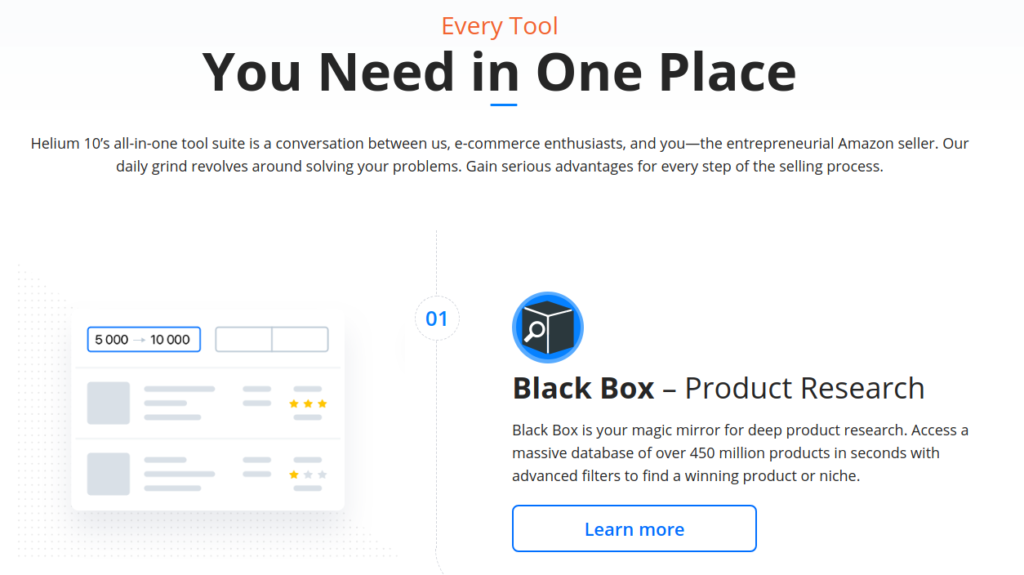
Helium 10 Black Box product research tool
Augustas: All right. So, Chris, are you ready to share your screen?
Chris: Let’s do it. Okay. All right perfect. So, the first thing I want to go over is gonna be the black box product research tool from Helium 10. You know, most of these product research tools are set up in a similar format where you can select from different categories, you know, in these different types of filters, you go ahead and click on the button. It’s supposedly supposed to, you know, pop out different product selections for you. Now, me as a seller, you know, how Amazon is built on, it’s built on a keyword database, right? Customers go on Amazon, they search for a keyword and based on that keyword, Amazon will populate different product listings that are relevant to that keyword that are geared towards that customer to you know, purchase make that purchase, right, so everything is keyword based. That’s why it’s very important that product research tools are also keyword focused and keyword based as well. Now, both tools do that very well. As you can see, Helium 10 does offer this keyword feature here that does go over, you know, that populates keywords based on the search criteria. Now for me, you know, I think every of your quote unquote Guru out there or education space will teach you similar filters to go through. Now, me as a seller, a seven-figure seller, I look at really two main data points when I’m doing my initial search here. That is being searched volume, which to me tells me the demand for that product, how many people are searching for that keyword on a monthly basis? And then two is going to be the review count. How competitive is it? And so, you’ll kind of see me talk about this throughout the whole video here. Every data point tells me a story about that product category or about that product. From those stories from those pieces of information, I can gauge a good opportunity versus a bad opportunity. So, for me, first thing I like to do is, you know, filter out based on the search volume and the review count. Okay, so for me, I like to have at least a monthly search volume of at least 5000 searches so that means every single month is 5000. At least 5000 searches for this particular keyword and then the review count. For me, I like to have a max about maybe about 400. I mean, the average number of view counts is about 400. Because you have to think, if you’re going in with a brand-new listing, with zero reviews, you know, you don’t want to be going up against listings that have thousands of reviews and things like that. So, you want to very low competition as much as possible, the lower the number of the review, count the average number, the better, right? And then, you know, of course, you can do the category here and for this purpose, I’m just going to do you know, let’s say a very popular one. Now, nowadays with the whole stand at home or home order is the kitchen and dining space. So, I’ve been doing a lot of research on these and been finding some cool gems. So, it’s a similar format, right? You go ahead and click search and you know, you’re, you’re kind of populated with this list of different keywords that fit the criteria here, right so you know you have round coffee table, mini bags sealer, things like that. You know, while this does a good job of, you know, providing the keywords that fit these filters, it kind of for me, it kind of gives me it doesn’t give me as much information as I’d like, because I’m a very analytical person. Like I said, I let the data Tell me what the products what good products are.
ZonGuru Niche Finder product research tool
Now I want to kind of kind of go back here on the, on the other side of ZonGuru , they do have a similar product research tool called the niche Finder. So, I’m gonna go ahead and click on here and how this is built. This is actually pretty cool. So, if you want to kind of like an easy mode versus advanced mode, you can actually do you know, just click on this and click on Search and I’ll kind of populate based on these different filters that they have here. It’s I think it’s john you can kind of explain it based on all these different buyer demand competition opportunities like that, right?
Jon: Yeah, so just to jump in there for a second. But on the easy mode, we’ve got the three filters at the top, easy startup, business folder and big hitter. You know, you can use those to really return results based on Yes, different filters. You’ll see that in the advanced mode, but essentially for easy startup we’re looking at something which is more easy to launch on Amazon might not take as much capital and might not have as much return in terms of sales, but it’s a lower risk, product type versus big hitter, which, obviously is something that that you know, you bring you more capital but higher return. So, if you’re just starting out, you can use this but really the advanced side is where the magic happens. So, I’ll click over there. Yeah.
Chris: Right. So, that’s why I use it again, because I know the type of products, I’m looking for the metrics I’m looking for when I’m doing this. So, I’m doing a similar type of category here. So, I did. It looks like it just kind of populated my last search, which is nice. So, it does a home and kitchen, kitchen and dining. I like to have a nice score because this is kind of like the whole, you know, putting all these data points together to give this score this nice score. I found that based on my research, anything above a 50 is potentially a winner. Again, the same things 5000 monthly search volume, average review of max of 400. Again, this is just the things that I do initially as during my product research, I know a lot of people have different ways they do it. But for me, I found this really gives a good selection of different products when I’m doing this, and now go ahead and click on Search and I want to showcase the difference here between ZonGuru and Helium 10s black box. So, for one, you know, like I said, it just populates a nice long list of different key words that fit this filter, but beyond that is you can actually kind of hop over it. If you want to actually click on it, it will actually show you the page one. If you were to search for, you know, ice bucket, this is what would populate right over here, which is really, really nice, right? Something that black box, you know, you can actually just go on this page right here, but you know, it’s really nice, just have things here. So, you can kind of look at it, you know, thousand view really, really quickly. From there, you have these more data points, which again, I’m a very analytical person, like I mentioned. So, I want to know, the search volume, the average number of views. I want to know, you know, the average price average rating just kind of gives all of this information here, really at a quick glance, where black boss just kind of gives you the search volume, the price, monthly sales, monthly revenue, BSR, things like that. So, a lot more data points that you can kind of look at a grand view, and as you go down the line, you can kind of click on each one and see You know, like what looks very interesting to you. Like, for example, the milkshake maker sounds very interesting and monthly search volume of 6000. You can see here the, it’s a relatively low number of average reviews, I know it’s electronic might be a little scary for some when they’re starting out. But this is potentially something of interest, right? And as you go down, you can kind of see these different, you know, keywords, which is again, why, you know, what Amazon is built on what people are searching for. So, the whole idea of product research is you want to take advantage of what people are already searching for, and have your listing, you know, exposed to them. Right, show your listing right there. So, for example, this churro maker, which is interest because everyone nowadays is baking a lot more now that they’re indoors. This could this look something of interest right here. So, it’s really cool because you can actually, you know, like I said, have all this information at a quick glance, you can actually search as if you’re searching for that keyword on Amazon. You can do all this all within this one webpage as opposed to, you know, black box going to, you know, going to Amazon right here and opening up a new window and things like that. So, when you’re looking for like, really niches, this is my personal preference. Again, both do the job. But, you know, my preference is I want numbers at a quick glance, I want to do this as quickly as possible because the more products I can do, the more you know different keywords I can look for during my session. The higher the likelihood that I might find something of interest and a really good opportunity, right for example.
Jon: If I can just jump in there for one second but I think as people use this the idea of the niche score, which is answering those four questions I talked about. Which is you know, is the actual Search demand, what’s the competition opportunity? You know, what, how much money do I need to actually launch the product and what’s the profitability potential of the product. Then that gives you that ultimate niche score. You know, for example, the chocolate bags are 62% that I’m seeing on the screen. As you trust that more and more, you’ll see, as you scroll through these results, the relevance and the amount of ideas that you’ll get in just a few minutes is quite, you know, from my side and speaking to each other’s, that is quite incredible. You’ll find I use this tool and a lot of people use this as an initial stock to just get product ideas, because you’ll find things here that you haven’t even thought of pretty quickly. It’s all derived from the way that we collect the keywords based on actual customers searches that are happening on a monthly basis and building a database from that. So, you’re getting a lot more relevant ideas for Private Label business. I mean, I don’t know, this is a rose beer. I never even heard of that. But that could be an interesting product, you know. So, that’s one of the great things about it is one, the amount of relevant ideas you get upfront, and then the ability to validate very quickly based on the niche for, but then also to open up actually see the results and then look at some really key data around like reviews, actual search volume, etc. Obviously, the ability to do those filters at a high level. So, we’re getting a lot of positive feedback from the school.
Augustas: I can imagine this niche score can be a really good hint for researchers. But isn’t it that the X ray, I don’t know if we will show Chrome extension but X ray from Helium 10 probably also has some scoring numbers on the Chrome extension, right? But it’s on the extension. Of course, it’s a little bit different interface.
Chris: Right, and this actually didn’t even show me this product here. Yeah, so every, you know, product research tool, whether it’s Helium 10, or whether it’s actually don’t have the Chrome extension, installed Helium 10. But you know, Jungle Scout Helium 10 will also have their, you know, score their own proprietary score that they come up with. So, that’s kind of standard across the board. But yeah, the Niche Hunter is similar as Black Boxes or Helium 10s listing score as well, as you know. I think Jungle Scout has a one through 10 scoring system. So, they’re all probably very similar in that sense.
Jon: And just to kind of yeah, absolutely. I think everyone has a scoring system, and they have a different way of approaching it. But our you know, and that’s fundamentally one of the things that we really focus on with ZonGuru from a business practical perspective, how can we give you a visualization that can really work for your Amazon business and again, back to those four questions. That’s why we have it as a rainbow. They call it the rainbow because it’s got those four-key metrics. So, it’s not just one overall score of like, say, 68%, we actually give you a breakdown of that by all of those four key questions. Because you might actually, for example, you might have great search volume, you know, great, you know, profitability, but the competition opportunity is at a zero. That’s really important to know, from an overall perspective, it might have great search volume, but if it’s so competitive, that it is not even worth getting into, you need to be able to break that down into those four questions. So, I think that’s what people find valuable there is the ability to break it down.
Does ZonGuru show review velocity?
Lisett: I have one question regarding to your tools because I haven’t used the weight version, or neither the extension. But I have used Helium 10 products and what I really like about X ray is the metrics of review velocity and a lot of sellers have been loving that because you might do product research and see somebody having like 400 reviews. But then a month, maybe they have already like 1000 or over. So, review velocity is also really important. Does your tool show that feature somehow?
Jon: So, review velocity no, so that is a unique thing that Helium 10 does. Again, you know, I think there’s definitely unique pieces to each. We do give view counts on our, we have another tool called Sales Spy where you can spy on competitors and kind of look at it. That will give you the average view count for a specific period of time, which, you know, you can as you pair on, you can kind of see review velocity, but not that actual metric. Yeah.
Nich Score metrics breakdown
Lisett: Okay, and so to go over your niche score, so it was four things and what were they?
Jon: So, the first one is based on demand. So, we look at search volume and we look at, you know, revenue and a few other metrics within that, but it’s often the question, you know, is there enough actual search demand for this type of product? There’s a way of breaking down, I think it’s like four to 6000 in terms of search volume, and 300 to 500 sales is a general score. So, we look at that. The second piece is competition opportunity. So, we actually analyze the top 25 competitors and we look at things like EBC review counts, length that they’ve been selling on Amazon, how optimized their listing is, you know, a few other metrics that are involved in that to actually give it a listing score and say. What is the actual competition opportunity for coming out is a really competitive niche or is it not? And then the third one is is really based around you know, how much capital you actually need. So, we look at the investment opportunity. So, up front how much money do you need to be able to buy stock and compete on page one at the sales velocity of page one. So, it’s a really important question to answer because you’re looking at something that actually needs, you know, $80,000 for you to actually investigate on page one, that’s a very different type of seller to someone who’s saying, hey, you know what, I’m doing my first product and I need $10,000. Right? So, we average around, I think it’s around a 10 to $15,000 initial investment, you know, to get a decent score. So, you know, that’s obviously depends on your risk propensity, but it’s entirely up to you. Then the last one is around profitability. So, we actually look at things like price, you know, again, sale velocity, which is important there, but, you know, can I actually sell a product to make a decent profit, an amount that is actually useful for me to scale my business because anybody who’s in private label, you have to understand that you need to be able to have enough money left over to help grow your business and if you’re left over. If you’re at a price point and you you’re making two bucks on every sale, that’s, you know, after advertising, whatever that is, you don’t have enough to really grow your business. So, that’s a really important thing like can I sell it at a price point and make enough profit? And for us as business entrepreneurs, those are really key questions we need to answer before we are even interested in launching a product. Then it goes further which is, you know, Chris, will get into this I’m sure but taking that and saying. Okay, how much dollar you know, when I look at the keywords. Can I actually go on these keywords and beat my competitors? So, at a high level that’s the questions we want to answer before we think it’s a good idea or not, I don’t know if it makes sense to use it, but hopefully it does.
Lisett: Definitely, yeah, definitely. Okay, cool.
Augustas: Yeah, I just wanted to demonstrate it on X ray. There is a success course probably something similar but it is on just on the results on this screen. But ZonGuru provides niche hunter here, just one I don’t know what these colors means it’s a little bit confusing. So, the orange is buyer demand and then yellow is competition. Green is investment and red one is revenue potential. The longer it is, the better or the worse?
Jon: Correct. Yeah. So, the longer it’s, you know, big competition opportunity can be confusing, because, you know, you want to make sure that all of the scores as high as possible out of 100%. So, you know, competition opportunity, but 60% that means that there’s less competition, there’s more opportunity, right. So, you know, that’s, that’s important to look at. You’ll see this rainbow score that we have is featured in a number of our tools like on our Chrome extension, and a few other paces. It’s something that is kind of unique and owned by us in terms of how we look at it and we use it in our training a lot.
Augustas: Okay, perfect. So, time is running, Chris, shall we look at your screen?
Helium 10 Magnet keyword research tool
Chris: Yeah, so, one thing I do want to go into again is kind of based on keyword research tool. Again, I really focus on the keywords because I think that is what’s the most important thing when you’re doing product research is finding like I mentioned what people are already searching for on Amazon and creating a product to show up on those keywords for their search results in order to capture those sales. So, I want to go over kind of the two keyword research tools from both tools Helium 10’s magnet, and then ZonGuru’s keywords on fire. So, I’m going to first start off with magnet Helium 10. You know, what I really like about Helium 10 actually is the fact that it’s pretty quick. So, if you’re looking for a quick keyword here, so you know, for example, if you’re doing yoga mat and you want to do a quick keyword search and I’ve done this before, it’s relatively quick to kind of get a nice quick list of keywords and their search volume here, right? So, let this populate here and yeah, there you go. So, you can see and I like to, again filter by the search volume, which again, I’m going to repeat, showcases the level of demand for a certain keyword how many people are searching for this on a monthly basis. As you can see for yoga mat, you know, over 900,000 monthly searches, which is absolutely insane. So, you know, they’ll show you the keywords, the search volume, their magnet score, again, that’s kind of their own score based on their own algorithm and their data points. The biggest thing is they provide is a CPR eight-day giveaway number that’s been really popular for products. When they’re looking to do their launches. You know, how many units do they need to allocate to rank for the number one position for this keyword so if you want it to rank on the number one spot for “yoga mat”.
CONTACT US
For a free product audit and quote
Recommended Posts
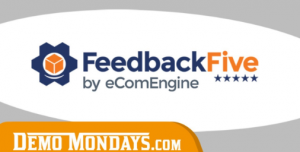
Feedback Five Review – Request Review Feature in Amazon
![]() May 2, 2021
May 2, 2021
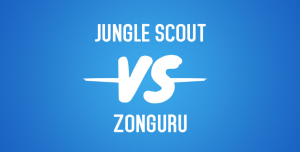
Jungle Scout VS ZonGuru – Amazon FBA Tool Comparison! Which one is better
![]() October 20, 2020
October 20, 2020
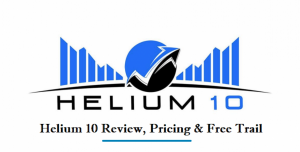
ManageByStats Review 2021 – Amazon Marketing Tool
![]() October 19, 2020
October 19, 2020
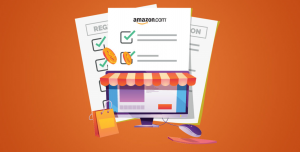
Create the BEST Amazon Listing with Sam Page from Amazon SEO Experts
![]() October 28, 2020
October 28, 2020